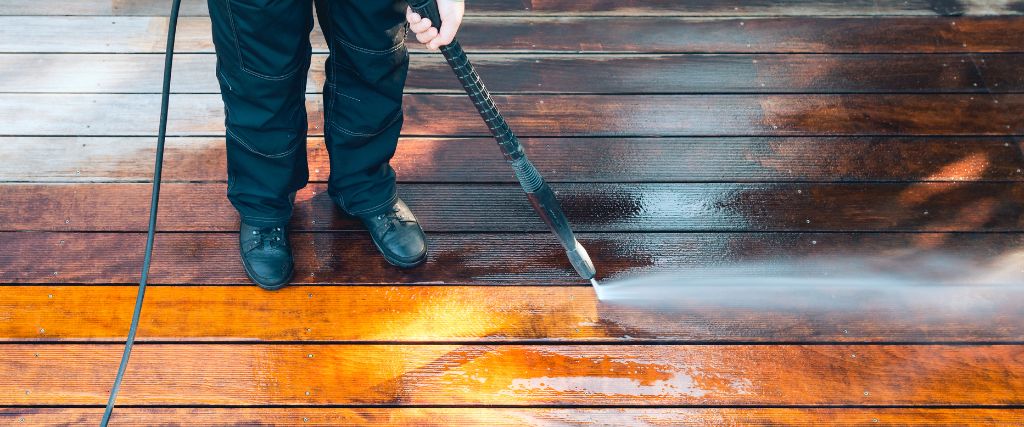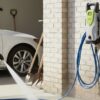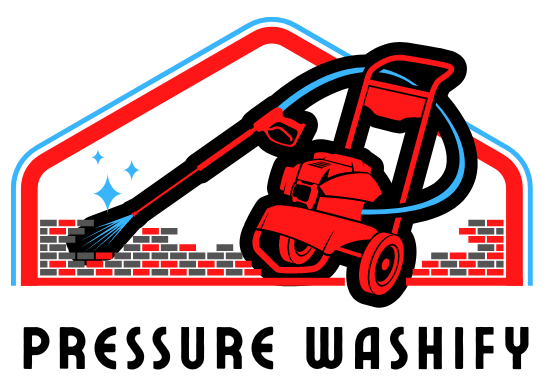Affiliate Disclaimer: This post may contain affiliate links, meaning we get a commission if you decide to make a purchase through our links, at no extra cost to you.
For both home and commercial purposes, an electric pressure washer is an indispensable utility. From washing away stubborn dirt on your patio to giving your car a shiny new look, this remarkable piece of technology delivers amazing results with seemingly minimal effort. But how does an electric pressure washer work, you might be wondering?
Undoubtedly, the electric pressure washer is one of the most versatile tools you can have in your home or business. With the simple flick of a switch, these machines deliver high-pressure water jets that make light work of even the toughest cleaning tasks.
Electric Pressure Washer Components: Understanding the Heart of the Machine
The function of the electric pressure washer might seem simple at first glance, but behind its efficient water-jetting capability lies an intricate system built around several key components. Each of these parts has a unique role to play, coming together to form a highly functional piece of equipment that makes our cleaning tasks more manageable.
Let’s dive deeper into the major parts of an electric pressure washer:
1. The Electric Motor
The electric motor is the powerhouse of our machine, converting electric energy into mechanical energy. It propels the unit’s water pump, dictating the pressure at which our water will be sprayed.
Read more about motors here.

2. Water Pump
This is where the pressure is built up. The pump sucks in water from your hose or reservoir and forces it out under high pressure. Generally, a triplex pump is used in most pressure washers because of its efficiency and durability.
Read more about pumps here.

3. Pressure Hose
The pressure hose is a specialized, high-pressure hose designed to handle the water’s increased force. This isn’t your average garden hose and is typically reinforced with wire mesh and has two or more layers of high-density plastic.
Read more about pressure hoses here.

4. Spray Wand and Nozzle
These parts direct the water where you want it to go. The length and shape of the wand can help you guide the spray, while interchangeable nozzles allow you to control the spray’s pattern degree.
Read more about spray wands & nozzles.
5. Detergent Dispenser
While water does the heavy lifting, sometimes it needs a helping hand. A detergent dispenser allows you to introduce cleaning solutions into the water stream to tackle those extra tough jobs.
Read more about detergent dispensers here.
The Working Principle of Electric Pressure Washers: Unleashing the Power!
The below steps outline the working principle of an electric pressure washer, revealing just how this machine creates its high-powered water jet.
Step 1: Water Inlet and Electric Motor Activation
When you connect your water inlet to a tap and switch the electric pressure washer on, the electric motor kickstarts into action. This is the first step and crucial to initiating the process of pressure building.
Step 2: Pressurizing the Water
An electric pressure washer relies on its pump to generate the high water pressure necessary for various cleaning tasks. The electric motor’s activation propels the water pump, which is designed to handle a large volume of water efficiently. The water pump is like the heart of the washer system, regulating the pressure and flow of water.
As water enters the pressure washer, the inlet valve allows water to flow into the pump. Here, a piston or plunger is set in motion by the motor, reciprocating back and forth within a cylinder.
This motion generates a rapid pressure build-up, forcing the water through the outlet valve and out of the high-pressure nozzle. The result is a steady stream of high-pressure water capable of removing dirt, grime, and stains.

Step 3: Releasing the Water
Once pressurized, the water then moves through the high-pressure hose, a resilient tube that can withstand the force created by the pump. From here, it’s directed toward the spray wand, waiting for you to release it.
Step 4: Controlling the Spray
The last part of this process lies in your hands. By pulling the trigger on the spray wand, you release the pressurized water toward the surface you’re cleaning. Interchangeable nozzles on the wand give you full control over how the water is dispensed, allowing for variation in the spray’s angle and intensity.
Step 5: Detergent Dispensing
Electric pressure washers can also dispense cleaning solutions. These detergents are stored in a tank and are drawn into the pump along with the incoming water. A detergent dilution system then mixes the detergent with water, and the resulting solution is sprayed out with the pressurized water.
Step 6: Auto Shut-off System
Modern pressure washers have an auto shut-off system. This means that the motor automatically turns off when the trigger isn’t engaged, minimizing wear and tear on the pump.
Wrapping it Up
As we’ve explored in this blog, the electric pressure washer is a marvel of engineering that brings together various components to create an efficient and powerful cleaning tool. By understanding the inner workings of these machines, users can optimize their performance, extend their lifespan, and avoid potential issues.
As technology advances, the electric pressure washer market will continue to expand and evolve, offering more features, tools, and capabilities. Staying informed about these developments can empower users to make smarter decisions when investing in a pressure washer and ensure that they choose a model that best fits their needs.
Whether it’s for home use or commercial applications, electric pressure washers have become an indispensable cleaning tool. With multiple ways to adjust water pressure, nozzles specifically designed for different tasks, and the ability to dispense detergents, the electric pressure washer offers unmatched versatility for cleaning surfaces efficiently.











